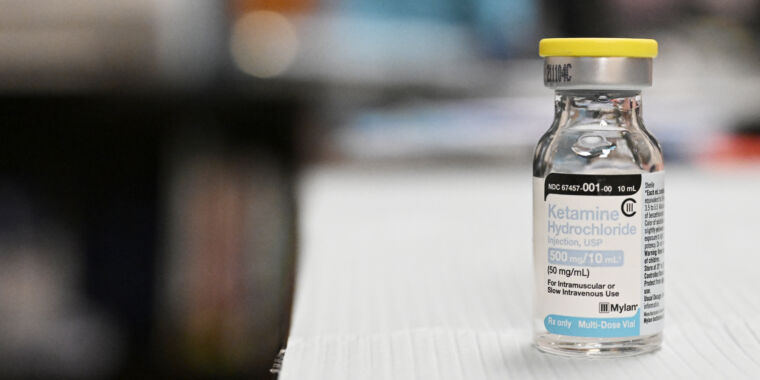The bacterium Neisseria gonorrhoeae causes gonorrhoea, which is often symptomless.Credit: Kwangshin Kim/Science Photo Library
Medics could soon have a tool to stem the rise of drug-resistant ‘super-gonorrhoea’. The first new antibiotic in decades for treating gonorrhoea has produced good results in a large-scale clinical trial, the non-profit organization developing the drug announced today.
Each year, nearly 100 million people worldwide contract gonorrhoea, which is caused by the bacterium Neisseria gonorrhoeae. In the past decade, there has been a worrying rise in cases of ‘super-gonorrhoea’ impervious to nearly all available drugs. The disease is often symptomless, and left untreated, N. gonorrhoeae can cause infertility and ectopic pregnancy, and can lead to increased HIV transmission.
New antibiotics are few and far between in drug-company pipelines. The potential new gonorrhoea treatment, called zoliflodacin, was developed initially by drug firm AstraZeneca and later by its spin-off Entasis Therapeutics in Waltham, Massachusetts. The drug targets an essential bacterial enzyme that untangles DNA during cell replication.
The US National Institutes of Health helped to fund a phase II clinical trial in 179 people with gonorrhoea, which reported positive results1 in 2018. But the drug’s development was “in limbo” until the Global Antibiotic Research and Development Partnership (GARDP), a non-profit organization in Geneva, teamed up with Entasis to push it forward by leading a large-scale trial, says Manica Balasegaram, GARDP’s executive director.
Head to head test
The trial enrolled 930 people with gonorrhoea in South Africa, Thailand, the United States, Belgium and the Netherlands. Participants received either zoliflodacin — given as a pill — or the disease’s standard treatment, an injection of an antibiotic called ceftriaxone, in combination with an oral dose of the antibiotic azithromycin.
None of the cases was caused by bacteria resistant to ceftriaxone or azithromycin, but the trial found that zoliflodacin was just as effective at curing infections as these drugs, GARDP reported in a 1 November press release. The trial also found that drug was safe and participants tolerated it well, Balasegaram adds.
The results — and the prospect of a new gonorrhoea treatment — are “certainly groundbreaking”, says Magnus Unemo, a microbiologist at Örebro University Hospital in Sweden. They couldn’t come soon enough. Ceftriaxone-resistant strains of N. gonorrhoeae have emerged independently around the world and are now spreading widely in some countries; some have also picked up resistance to azithromycin, Unemo adds. “This developing situation is a grave concern, because gonorrhoea might become untreatable.”
But the strains remain sensitive to zoliflodacin. Unemo’s team and others have found that N. gonorrhoeae can evolve resistance to zoliflodacin in the laboratory2, but no resistant strains have yet been detected in samples from patients.
This might not always be the case, particularly if zoliflodacin is overused or misused — for instance by failing to administer it for long enough to wipe out a person’s population of the bacteria. “Gonorrhoea has managed to develop resistance to all classes of drugs that have been thrown at it,” says Balasegaram.
Treatment and tests
To forestall resistance to zoliflodacin, the drug is being developed only as a treatment for gonorrhoea and other sexually transmitted infections (STIs). However, it will be up to regulatory and public-health agencies to decide when and how the drug can be used.
New diagnostics will also be important, says Teodora Wi, an STI specialist at the World Health Organization in Geneva. Tests that can rapidly distinguish gonorrhoea from other STIs should be more widely available in the near future, but those able to identify drug resistance are further off. National surveillance programmes for antibiotic-resistant gonorrhoea could also guide the responsible use of zoliflodacin, Wi adds.
“We still have to work this out,” says Balasegaram. “We cannot deprive people who need this treatment around the world.”
GARDP has a licence to sell the drug in most of the world and Entasis has marketing rights for the remaining territories. Balasegaram declined to say how much it would cost. GARDP already has a manufacturing deal with an Indian drugmaker, and Balasegaram hopes that large-scale production will eventually mean that zoliflodacin costs about the same as existing treatments — just a few dollars per course.

Dr. Debi Johnson is a medical expert and health journalist dedicated to promoting well-being. With a background in medicine, she offers evidence-based insights into health trends and wellness practices. Beyond her reporting, Dr. Debi enjoys hiking, yoga, and empowering others to lead healthier lives.








